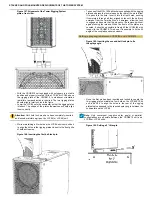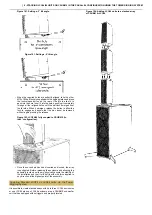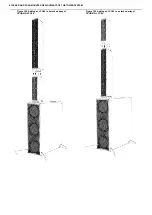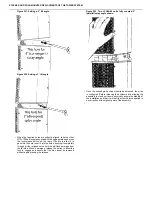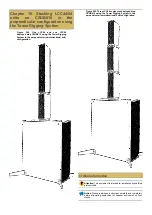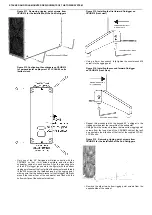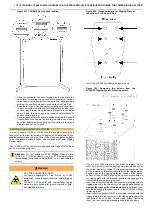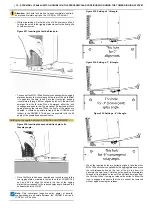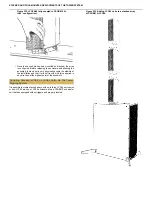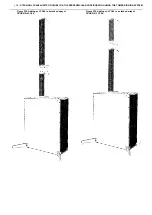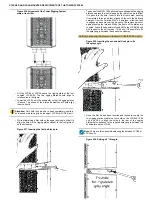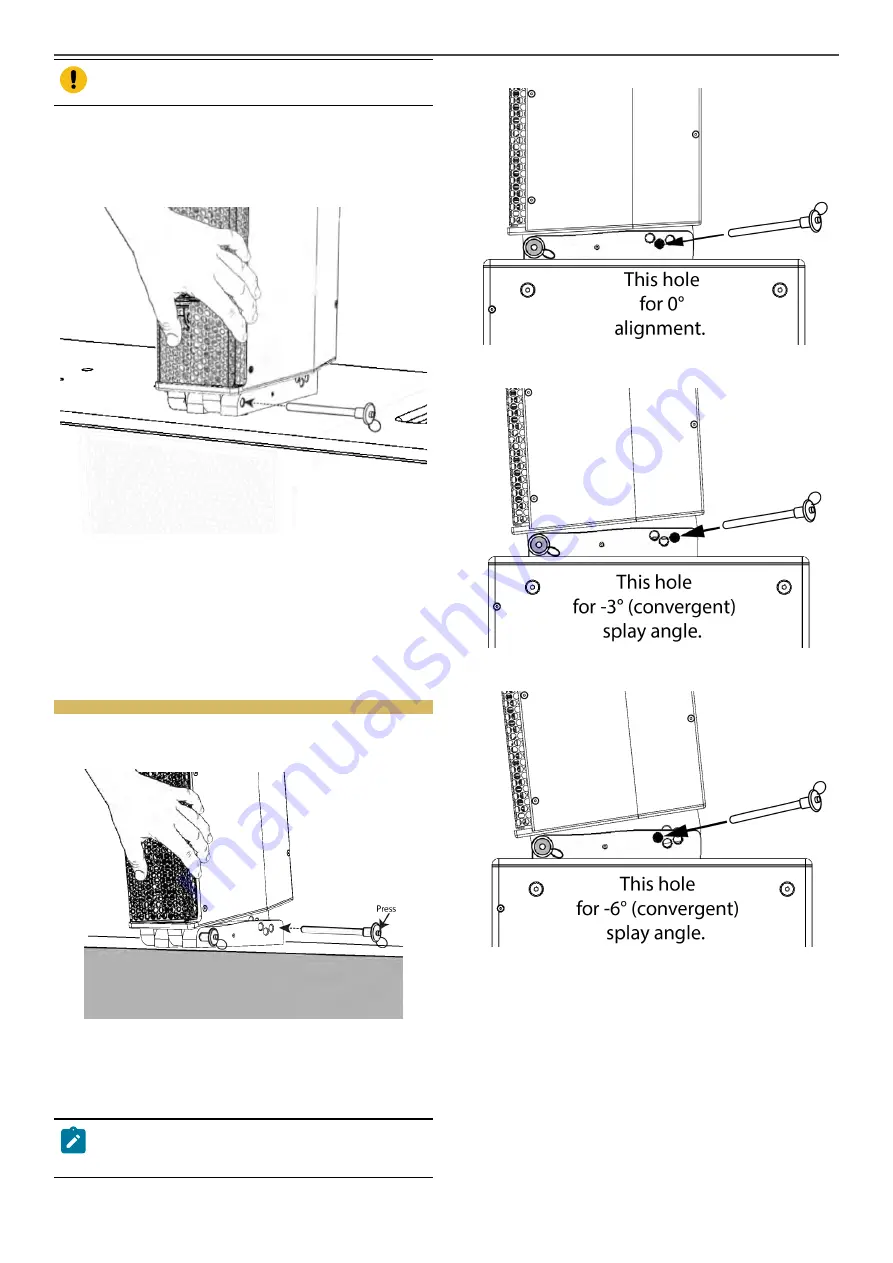
| 10 - STACKING LCC44/84 UNITS ON CSUB610 IN THE PERPENDICULAR CONFIGURATION USING THE TOWER RIGGING SYSTEM
Attention: Until both lock pins have been completely inserted
and locked, maintain a grip on the LCC84 (or LCC44) unit.
•
While maintaining a firm hold on the LCC84 enclosure, slide it
to align the holes in the rigging plates closest to the front grille
of both enclosures.
Figure 227. Inserting the first ball-lock pin.
•
Take one of the M10×100 ball-lock pins supplied with the rigging
plates and press the lock release on the rear of the pin to allow
it to pass into the hole. Insert it into the front holes, pushing
it completely through all four aligned holes until the ball-lock
emerges from the far side. When it emerges, allow the lock
to engage and assure that the pin cannot be removed without
again pressing the release. When the fronts of the plates are
coupled, it should be possible to freely tilt the LCC84/44 with
respect to the CSUB610. This done, it is possible to fix the tilt
angle of the coupled speaker enclosure.
Setting splay angle between LCC84/44 and CSUB610
Figure 228. Inserting the second ball-lock pin to fix
the splay angle.
•
Once the first pin has been inserted and locked to couple the
two rigging plates, maintain a firm hold on the LCC84/LCC44
unit, and tilt it to align the holes in the rear of the rigging
plates that correspond to the required splay angle between the
subwoofer and the LCC84.
Note: Only convergent (negative splay angle) or parallel
configurations are possible between the CSUB610 unit and
LCC84 or LCC44 units.
Figure 229. Setting a 0° tilt angle.
Figure 230. Setting a -3° tilt angle.
Figure 230. Setting a -6° tilt angle.
•
When the required holes are perfectly aligned, take the other
M10×100 ball-lock pin supplied with the rigging plates and press
the lock-release button on the rear of the pin to allow it to
pass into the hole. Insert it into the holes, pushing it completely
through all four aligned holes until the ball-lock emerges from
the far side. When it emerges, release the button to allow the
lock to engage and assure that the pin cannot be removed
without again pressing the release.


